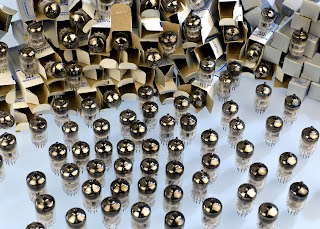The humble vacuum tube, and why is it (not always) better than solid state

vac·u·um tube /ˈvakyo͞om ˌt(y)o͞ob/ noun an electron tube containing a near-vacuum that allows the free passage of electric current. Ah yes, the humble vacuum tube, ancestor of the transistor. Also known as electron tube. Or tube. Or valve (for our British friends). As its name implies, the components are housed in a glass (or sometimes metal) envelope that is at high vacuum, where all the magic happens. Get ready, because we're going to say "tube" a lot in this article. Tubes: a (very) short history and (very) short explanation of how they work The simplest of tubes - and also the first practical application of the concept - dates back to 1904 and is called the Fleming Valve, invented by John Ambrose Fleming. It contains a single heated electron-emitting cathode and an anode. The current can only go in one direction: from the cathode to the anode. The current flowing between the cathode and anode can be controlled by adding grids and applying a voltage on them. Most tu